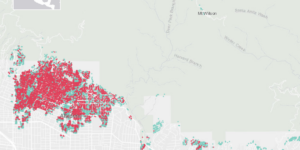Despite safer vehicles on the road with technology that aids in avoiding crashes, the advanced technology is contributing to costlier repairs, higher claims costs and longer cycle times, according to the latest 2024 Crash Course Report by CCC Intelligent Solutions Inc.
The report, now available quarterly, is based on data from 300 million claims-related transactions and millions of bodily injury and personal injury protection (PIP) /medical payments (MedPay) casualty claims processed by CCC’s clients.
Crash Course Q1 2024 found increasing vehicle complexity, combined with rising labor costs and shortages, are placing persistent pressure on carriers and repairers.
Additional factors, like scheduling backlogs, have contributed to the 60 percent increase in the amount of time it takes for vehicles to enter repair shops after estimate completion, compared to pre-pandemic times, the report noted.
“Much of what the industry is experiencing is reflective of a new normal where complexity, beginning with the vehicle itself, is reshaping the market landscape,” said Kyle Krumlauf, director, Industry Analytics at CCC and co-author of Crash Course. “CCC has shifted to a quarterly publication of Crash Course to support the growing needs of our customers and the industry. This change allows us to provide more data and insights more frequently, helping industry participants anticipate challenges and be better equipped for the road ahead.”
A key challenge faced by the auto claims and collision repair industries in keeping pace with the industry’s tech transformation are the increased costs associated with repairing advanced driver assistance systems (ADAS) and other technology.
The report found that EVs are becoming more common in repair assessments.
EV repairs carry higher costs, especially in labor.
Longer repair times are common due to capacity constraints and detailed repair procedures.

EVs are totaled less often than non-EVs, the report found, reflecting changing valuation trends.
An emerging “replace vs. repair” trend, a preference for replacing parts instead of repairing them, demands different skill sets for the repair industry leading to higher costs for consumers.
The report found that over the past decade, the cost differential for repairing older versus newer model year vehicles has grown by 35 percent.
Increases in property losses from severe weather events have also been seen.
Because of high turnover among adjusters, subrogation efforts have slowed, leading to decreased referrals, complicating revenue and cost reduction strategies, the CCC report stated.
Despite decreasing treatment duration and procedure counts for injury claims since the peak in 2021, the report found severity continues to climb due to significant cost increases for medical bills, particularly in high-dollar procedures like radiology and surgery.
The use of “AI and automation tools to speed and inform functions from estimating to scanning to parts ordering continue to grow as the industry looks to offset the effects of labor shortages and the complexity that comes with today’s more sophisticated vehicles,” the report stated.
The report also includes industry-level detail on claims frequency and impact severity, medical costs, parts costs, total loss trends and more.
The Q1 2024 report is the 29th edition of Crash Course.




















 2025 Underwriting Profit and ‘Shop-a-Palooza’ Predicted for Auto Insurance
2025 Underwriting Profit and ‘Shop-a-Palooza’ Predicted for Auto Insurance  Property and Casualty Insurance Trends for 2025
Property and Casualty Insurance Trends for 2025  First 2025 Atlantic Hurricane Season Forecasts 7 Named Storms
First 2025 Atlantic Hurricane Season Forecasts 7 Named Storms  Business Groups, Trial Lawyers at Odds Over Georgia’s Latest Push to Curb Lawsuits
Business Groups, Trial Lawyers at Odds Over Georgia’s Latest Push to Curb Lawsuits 




